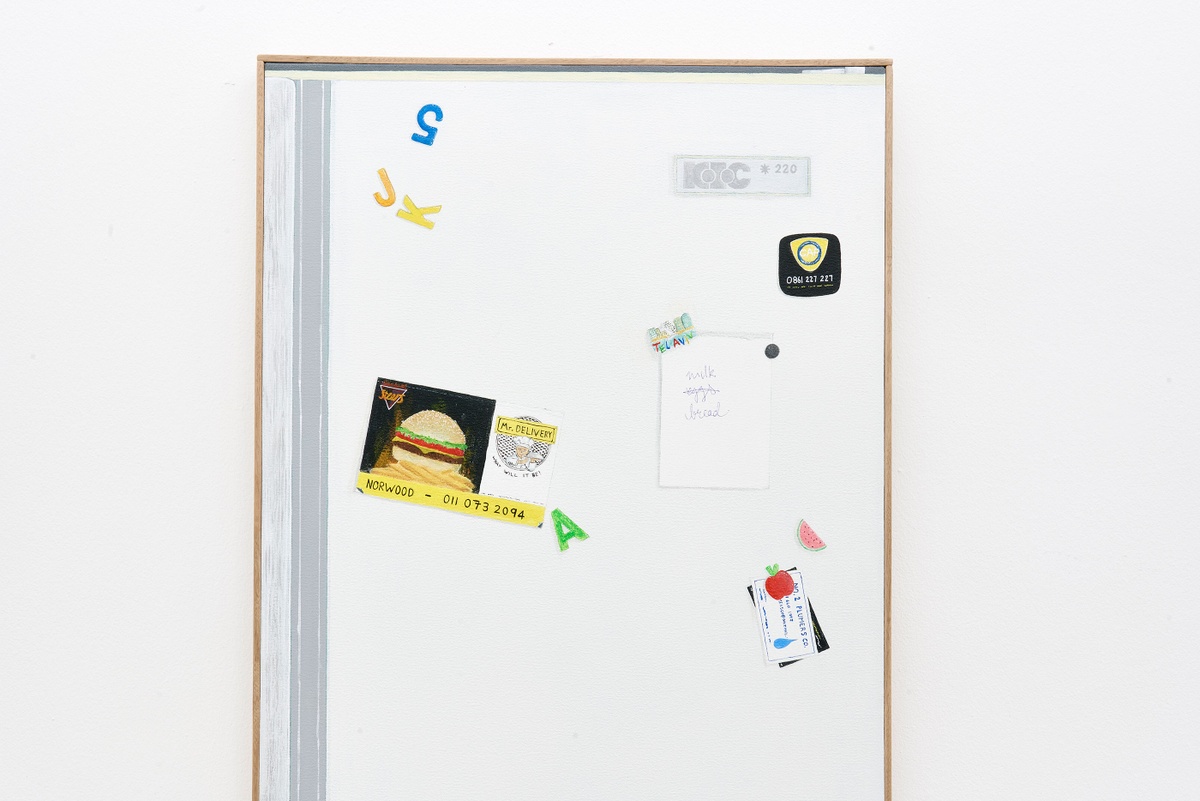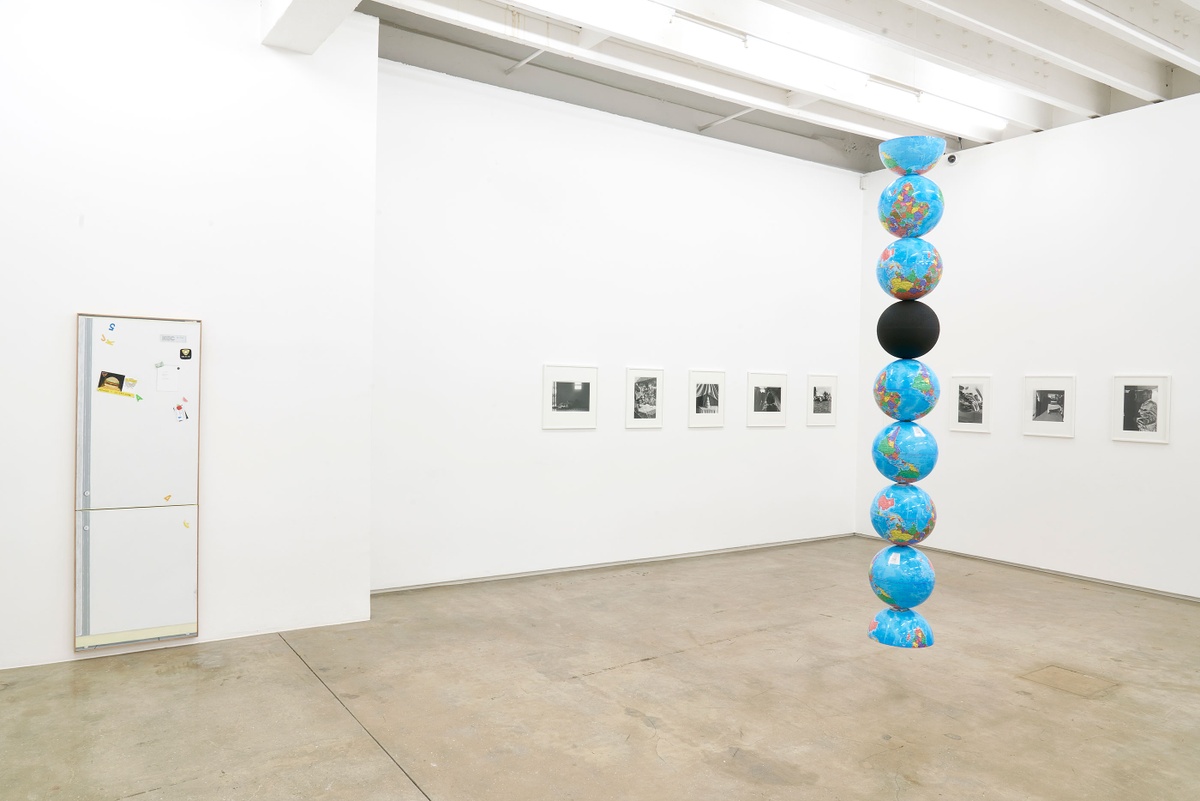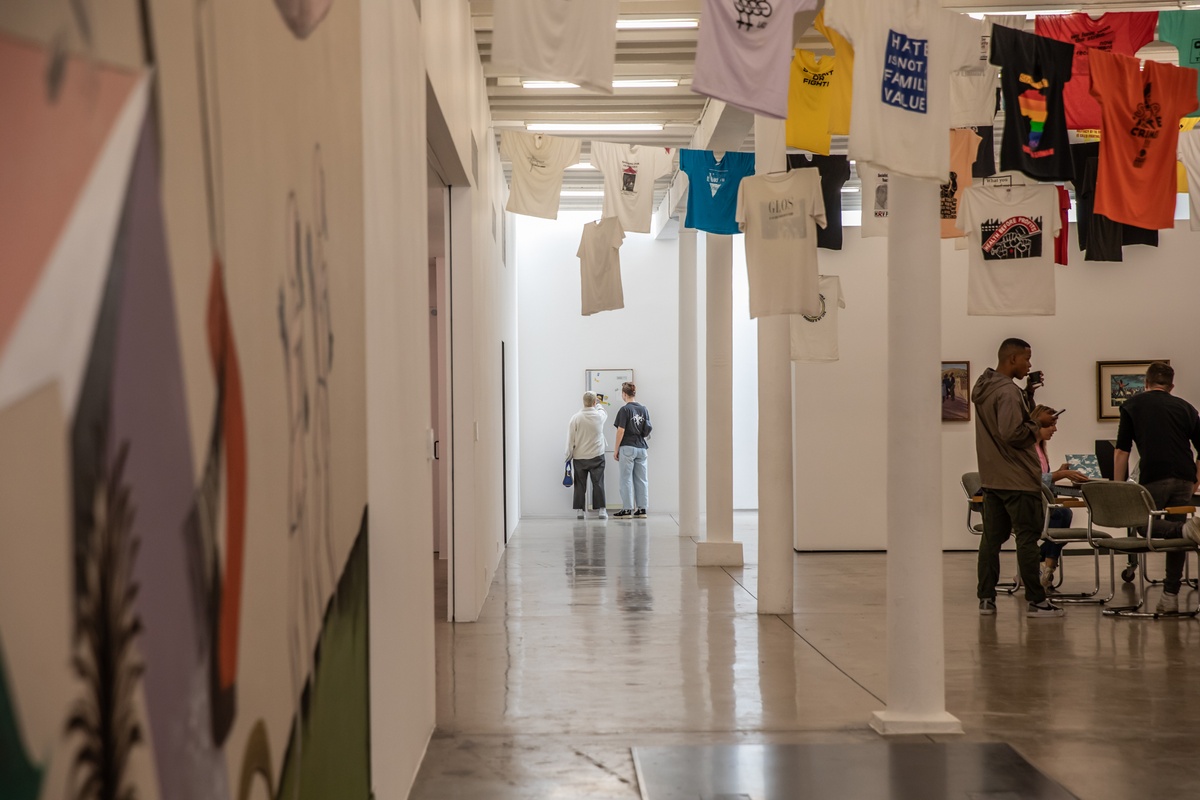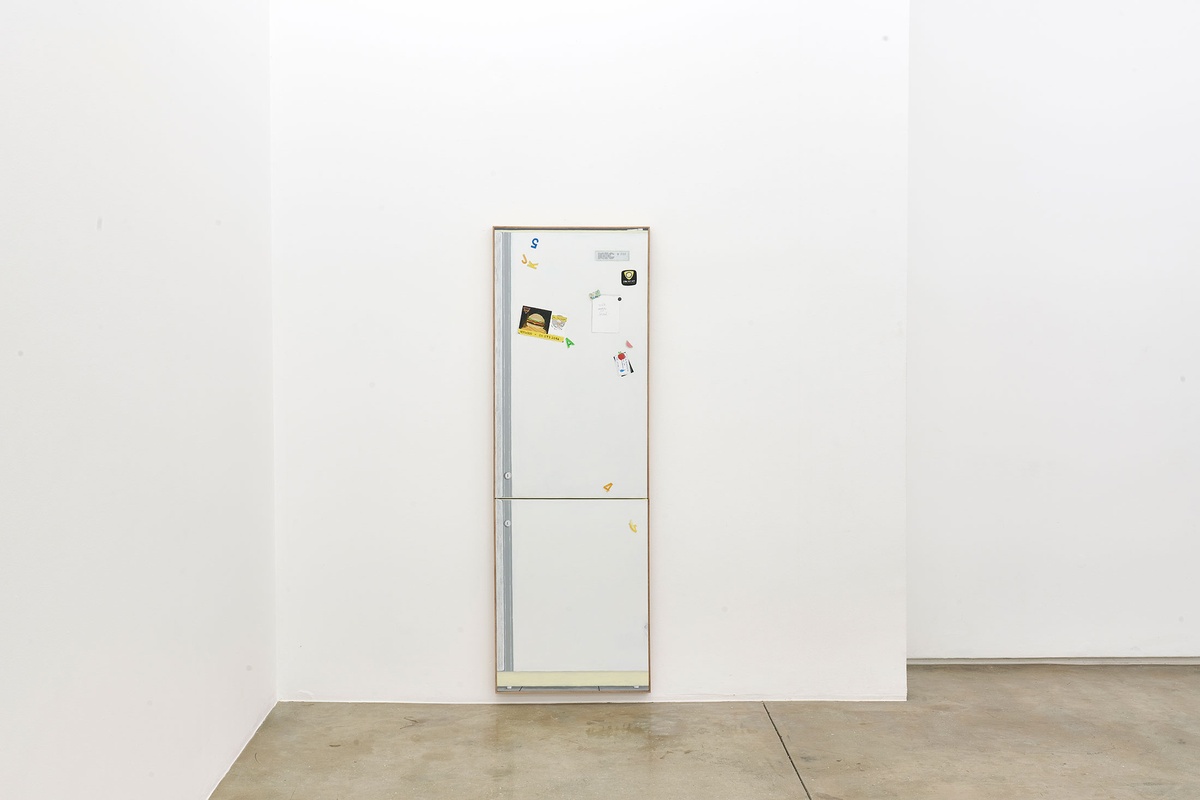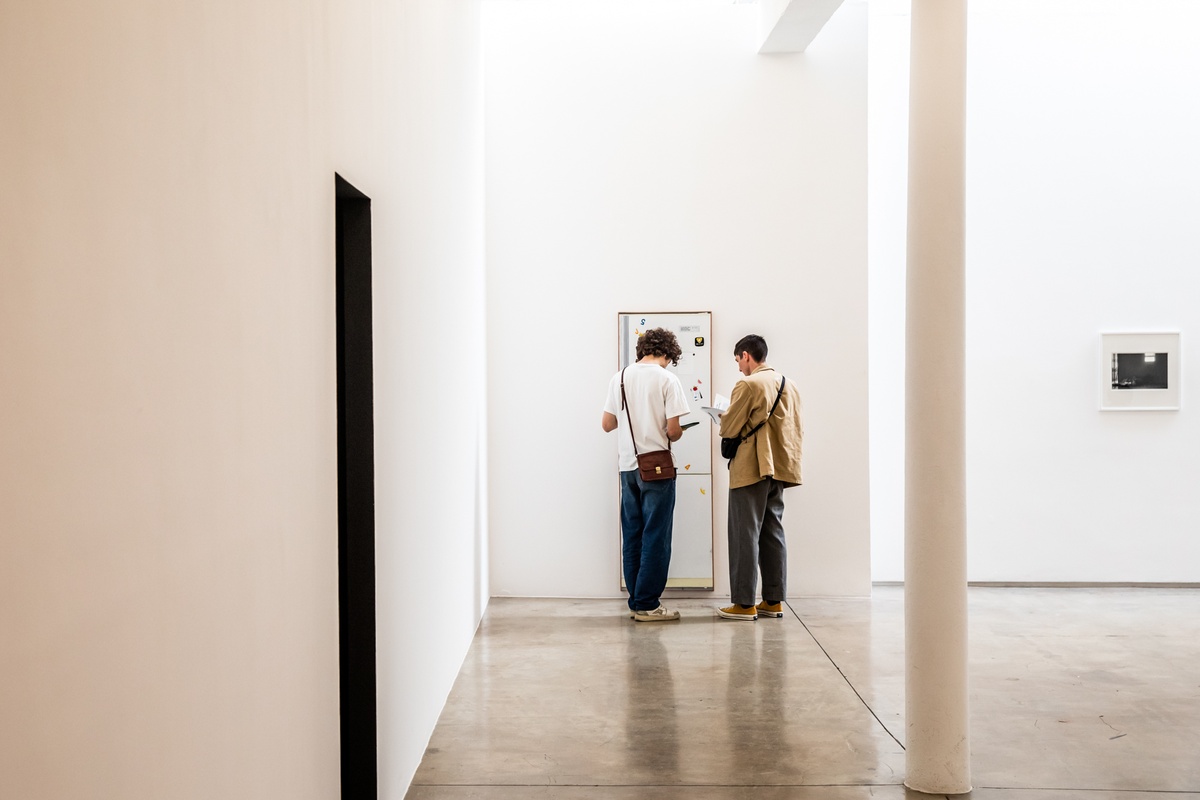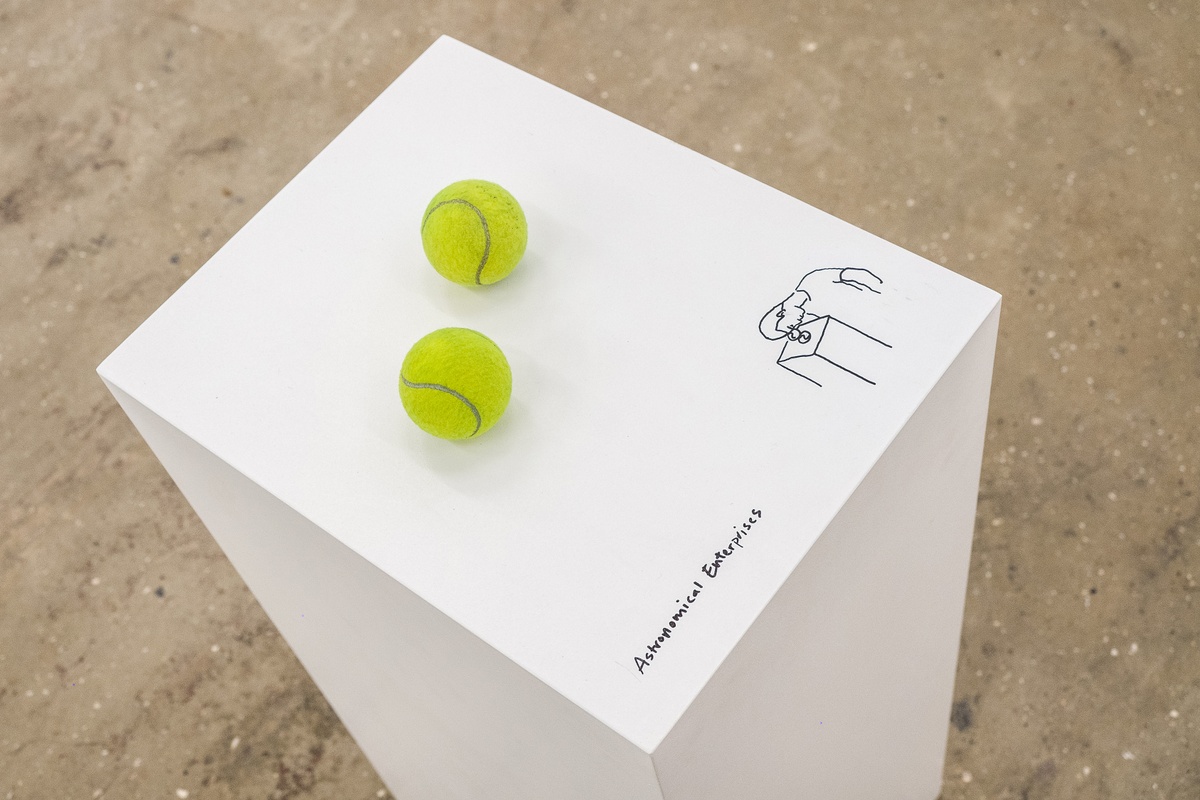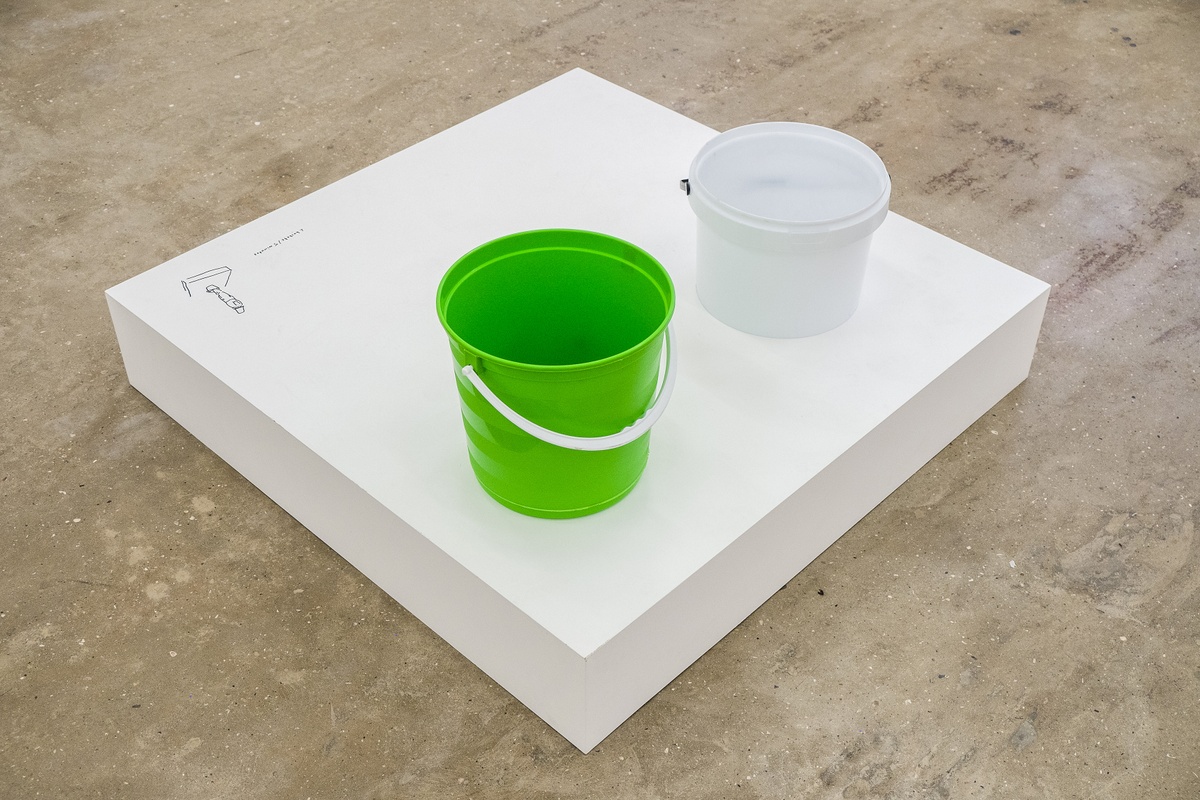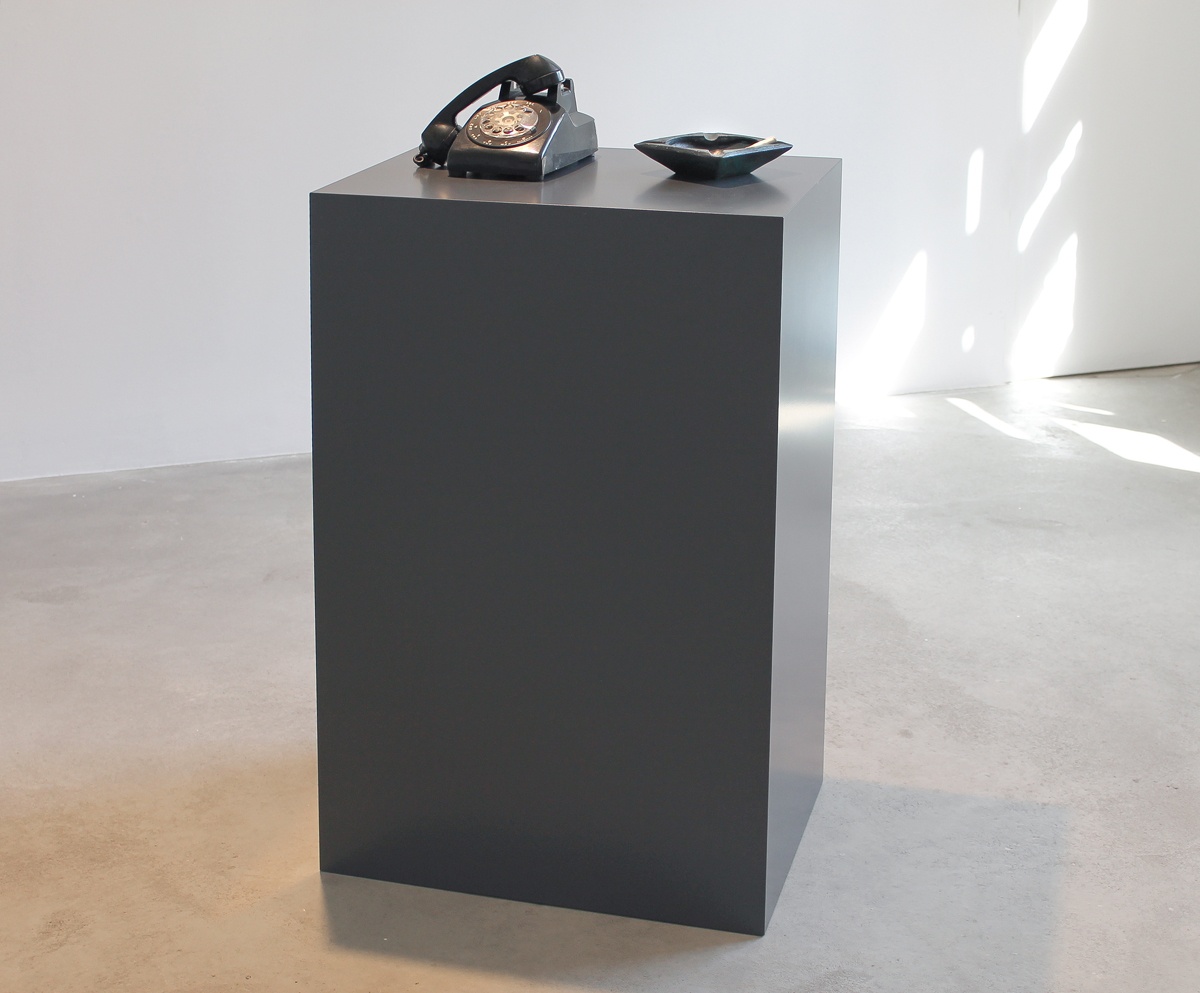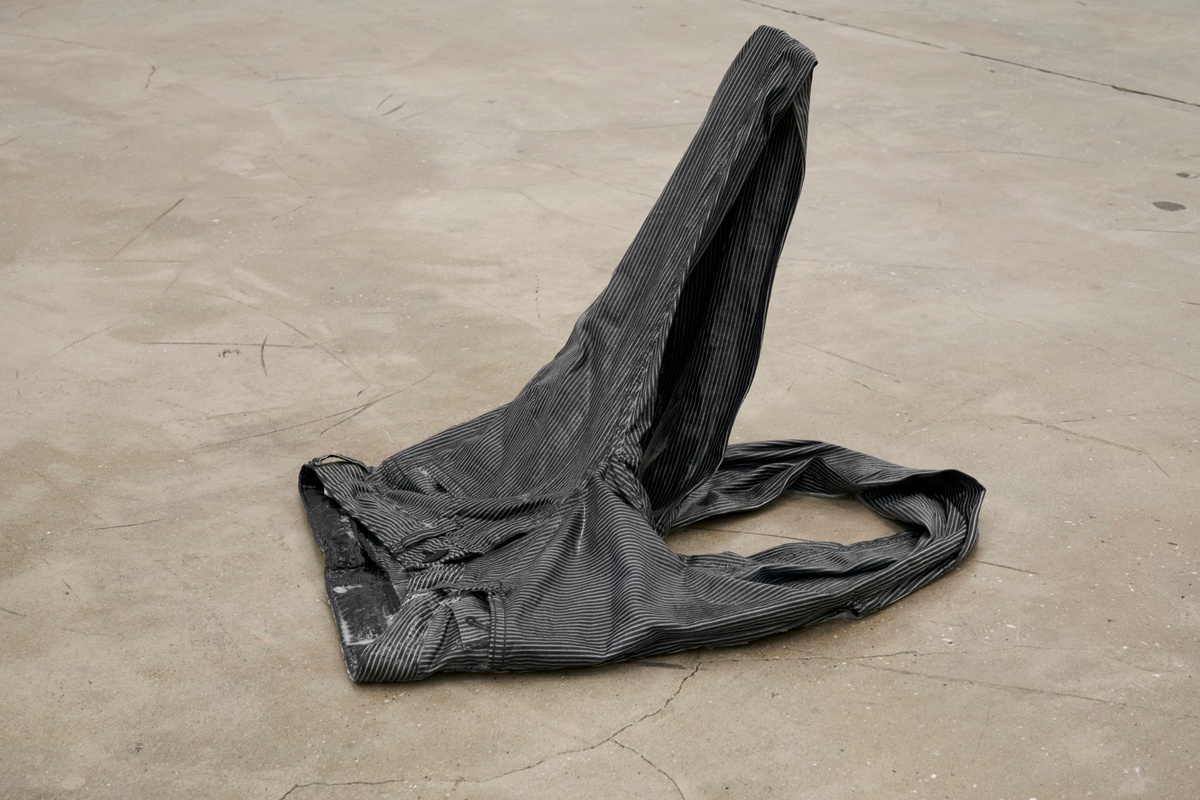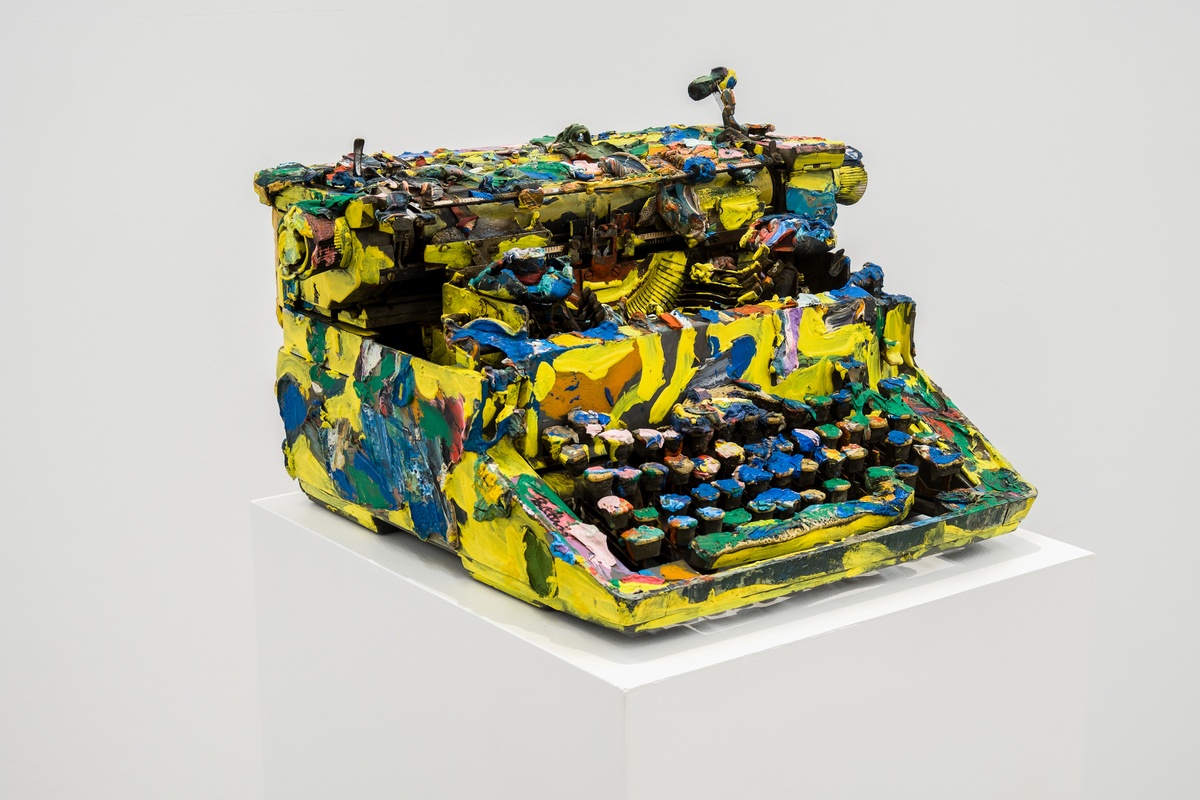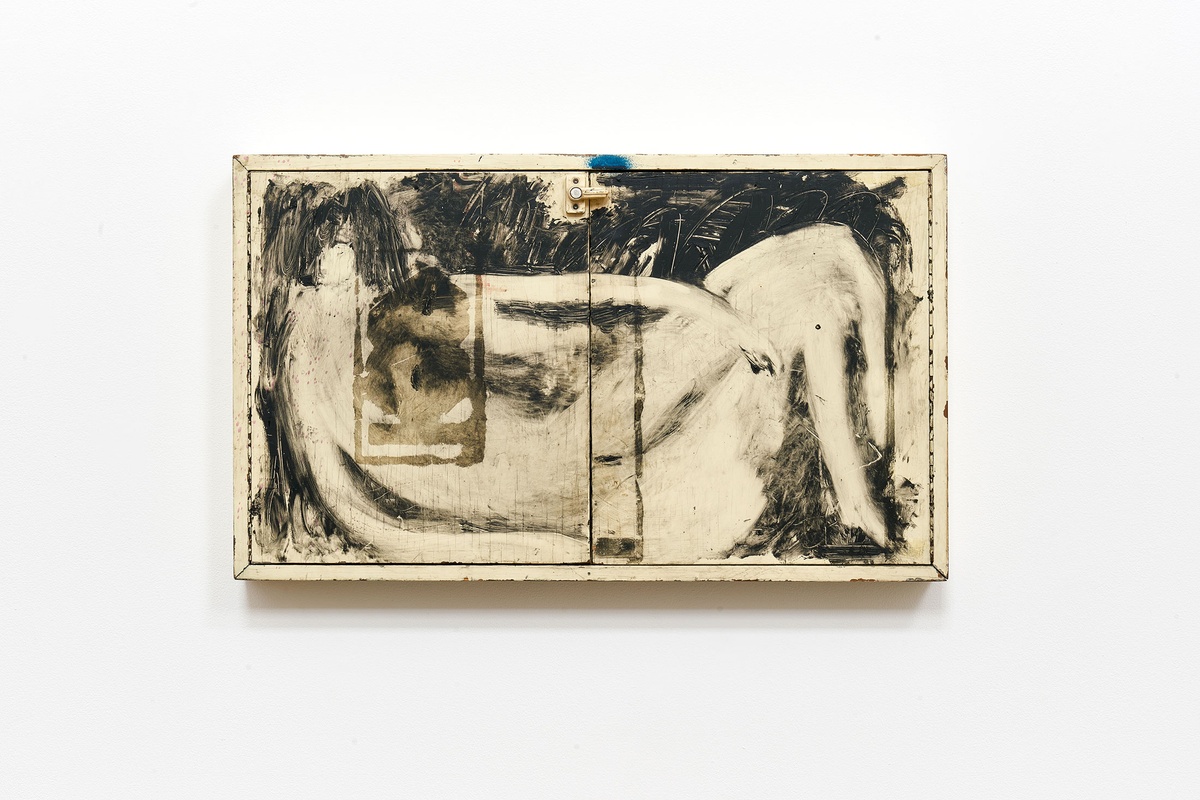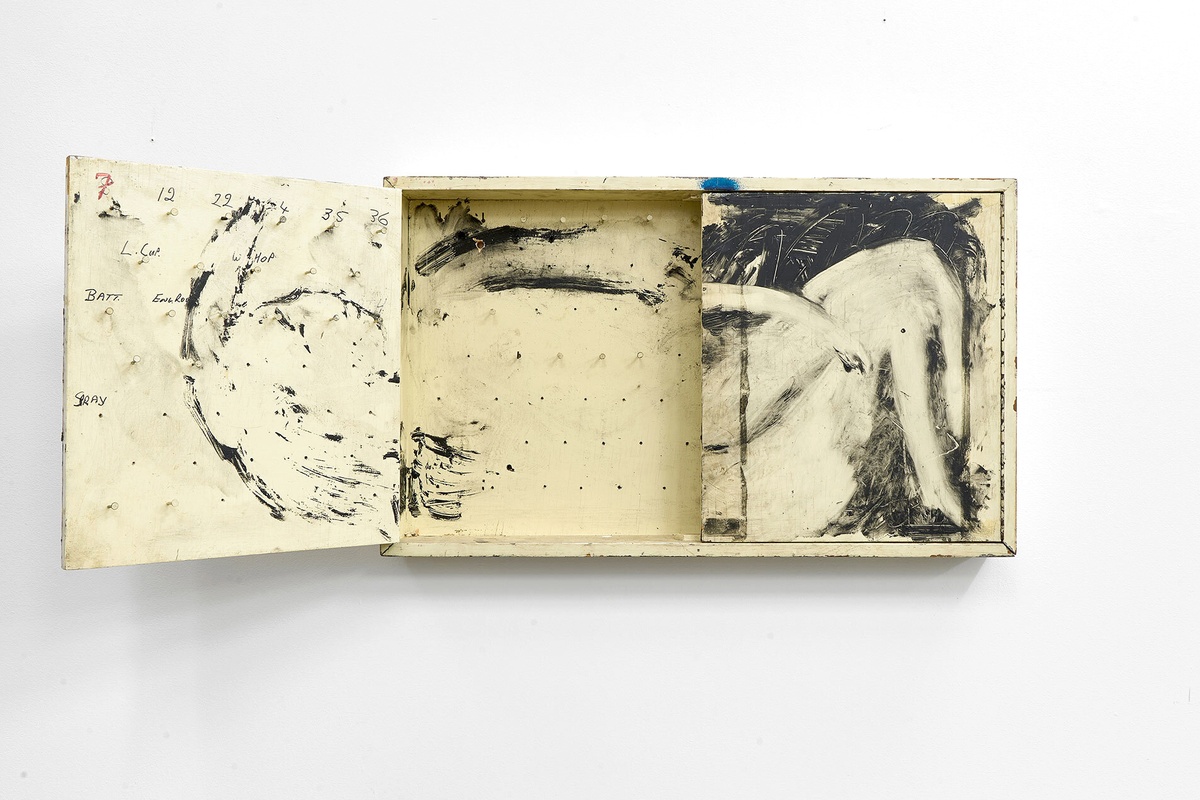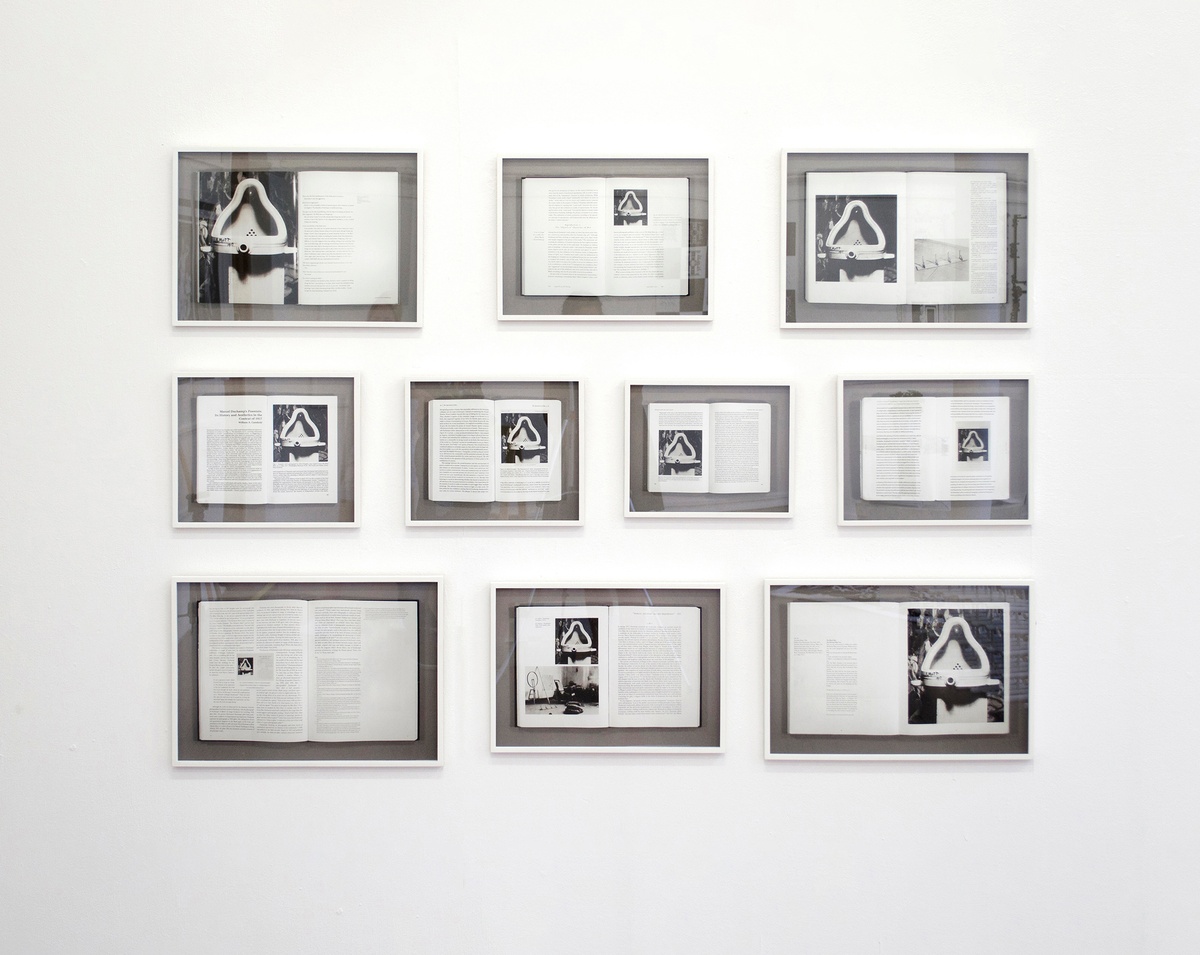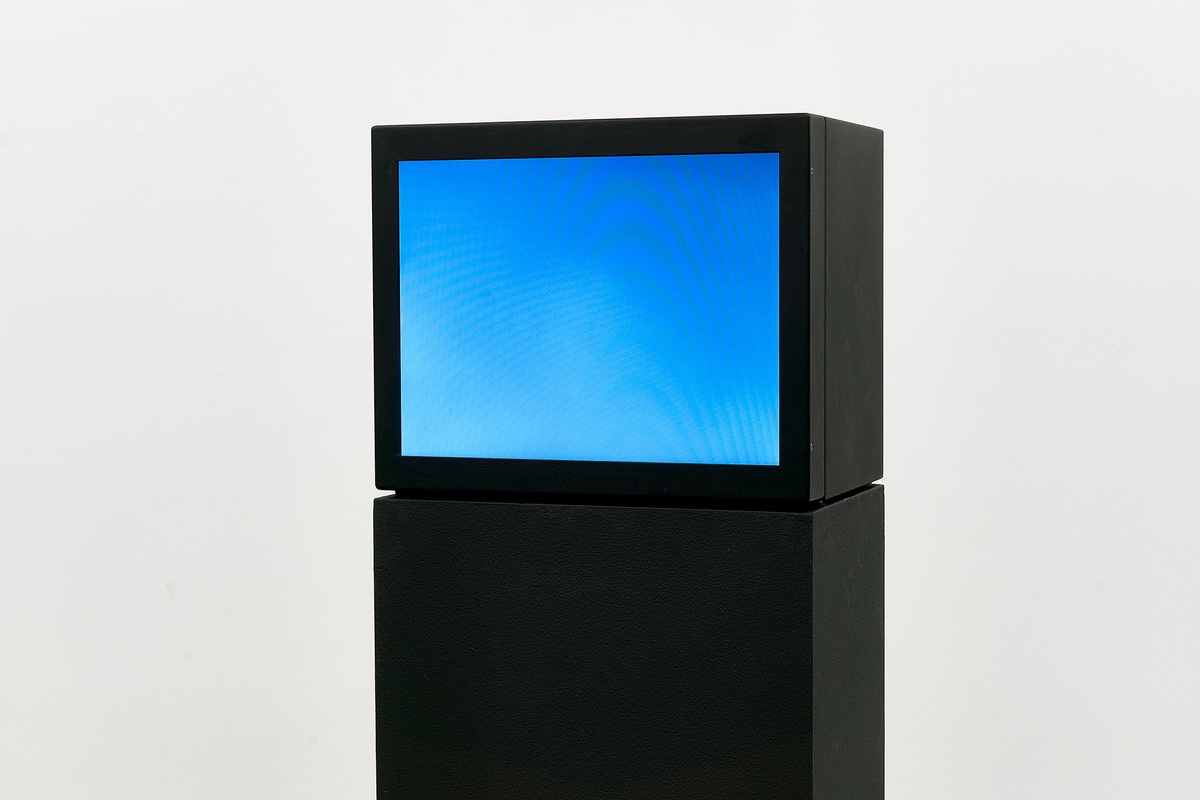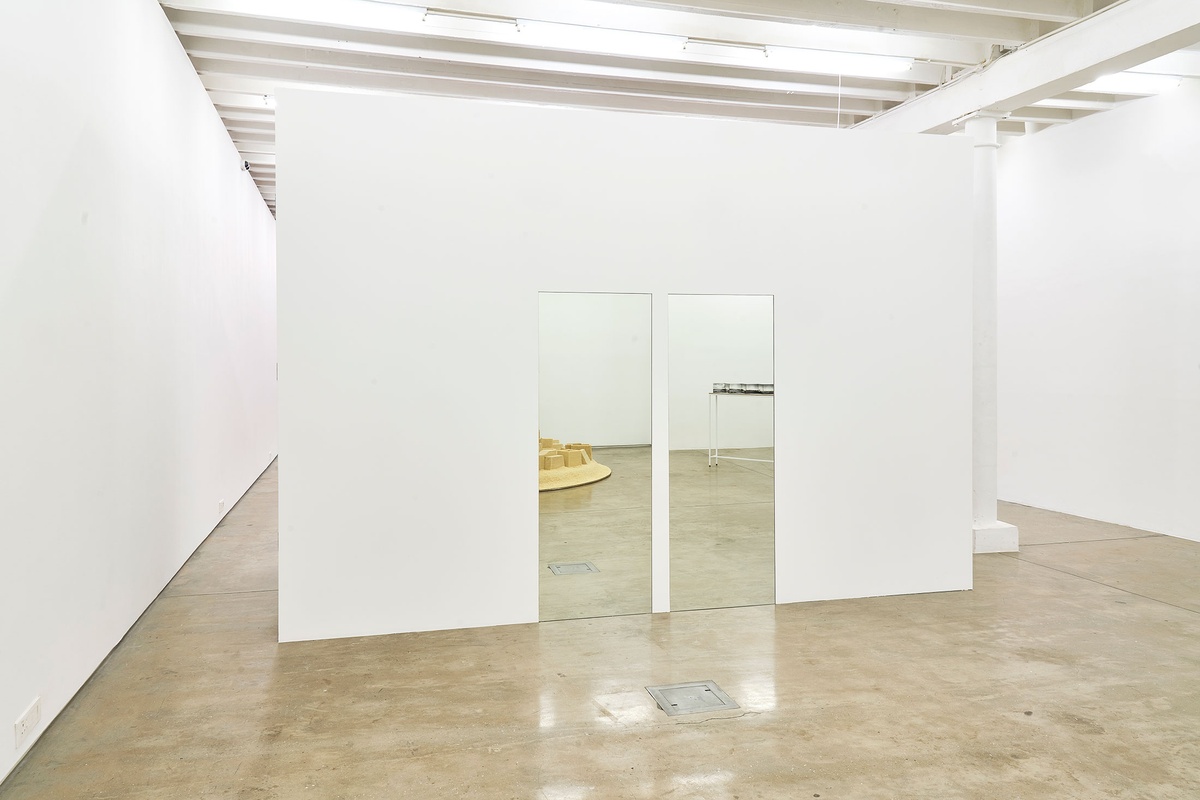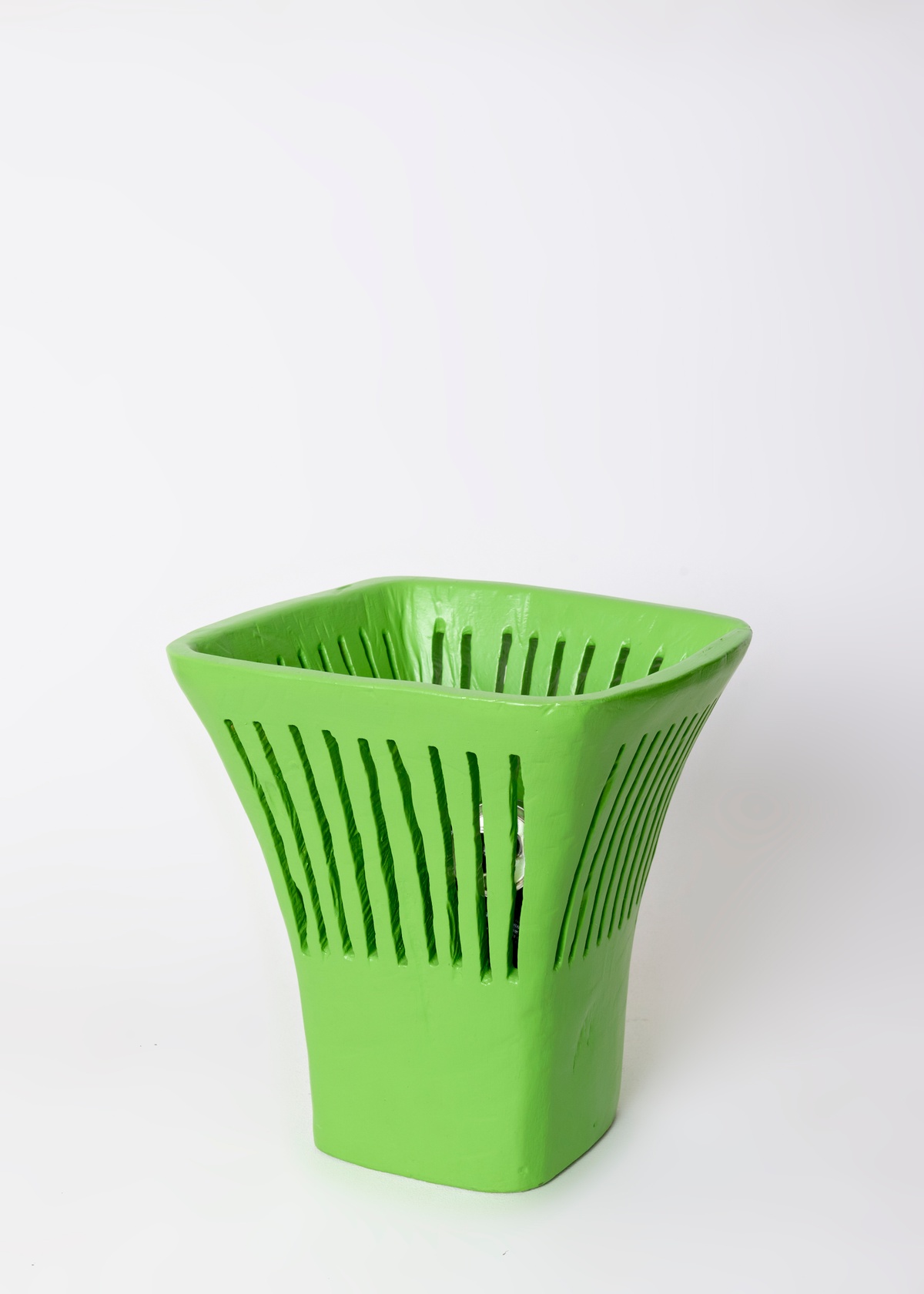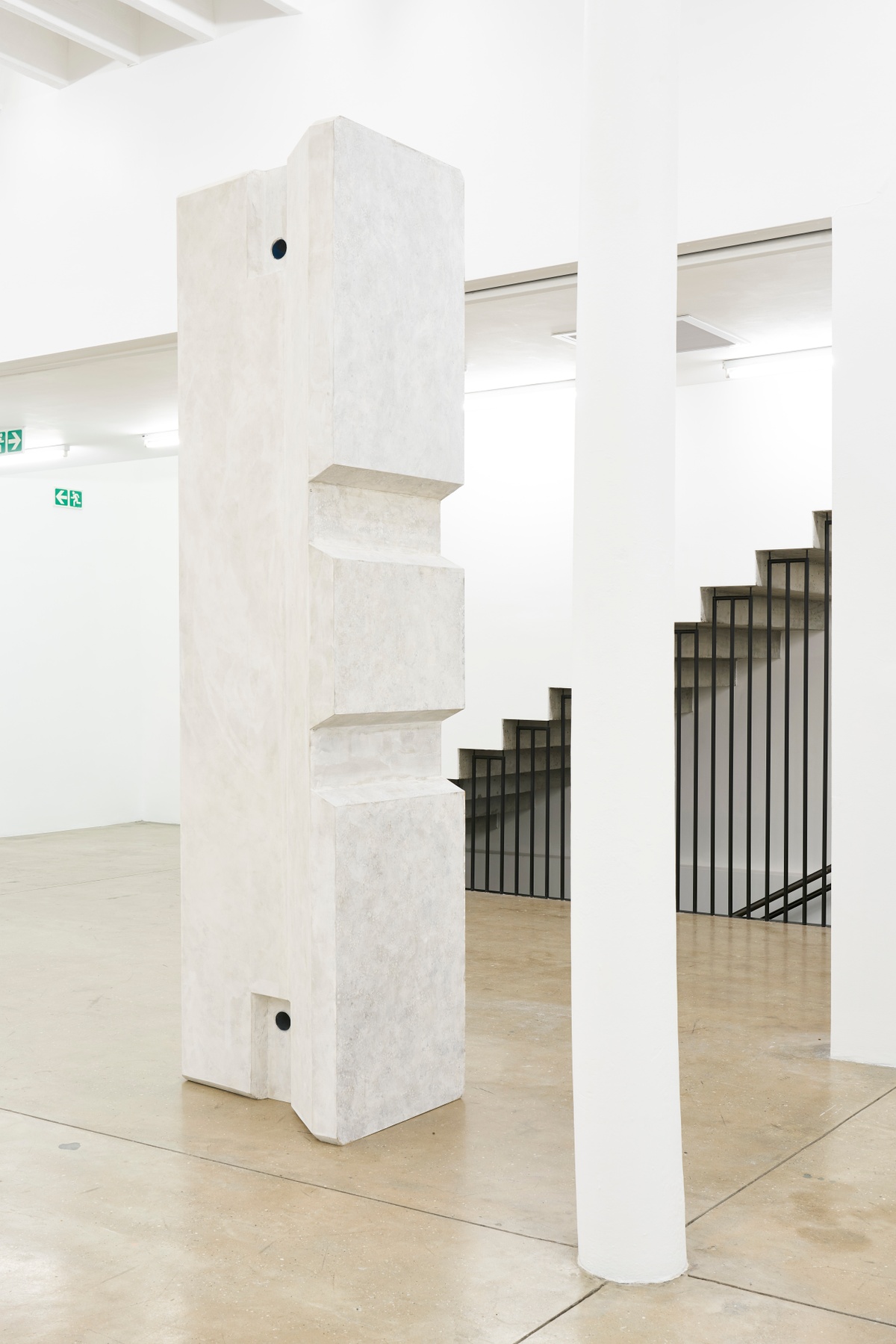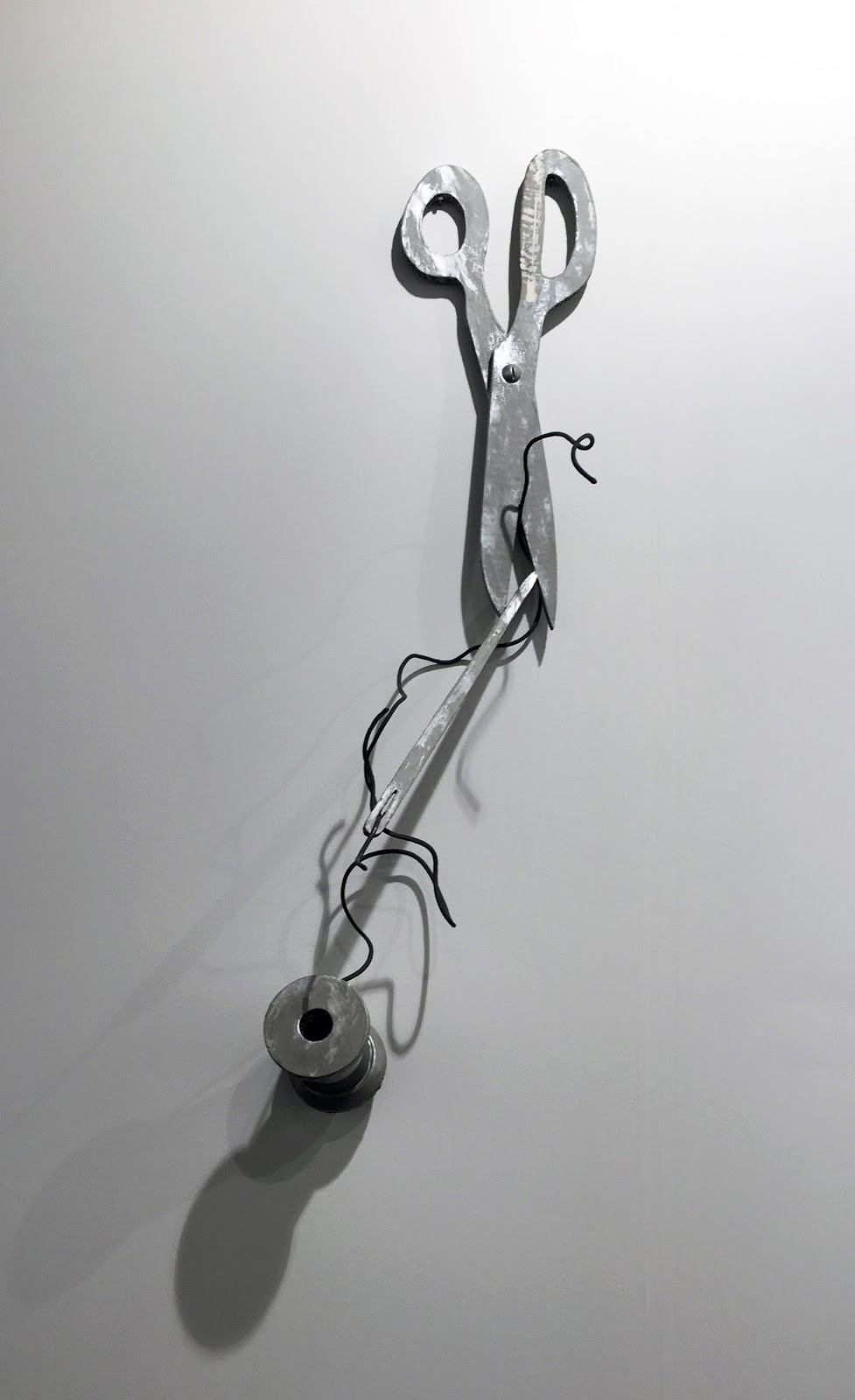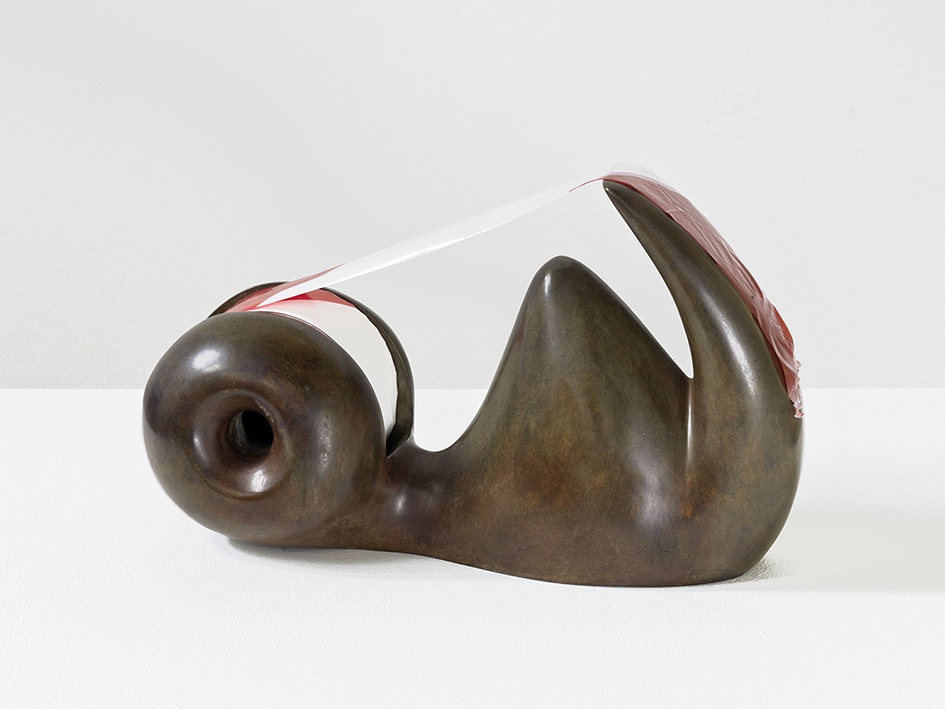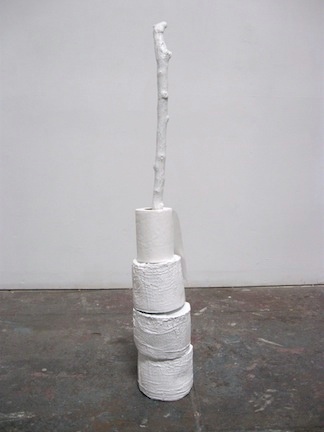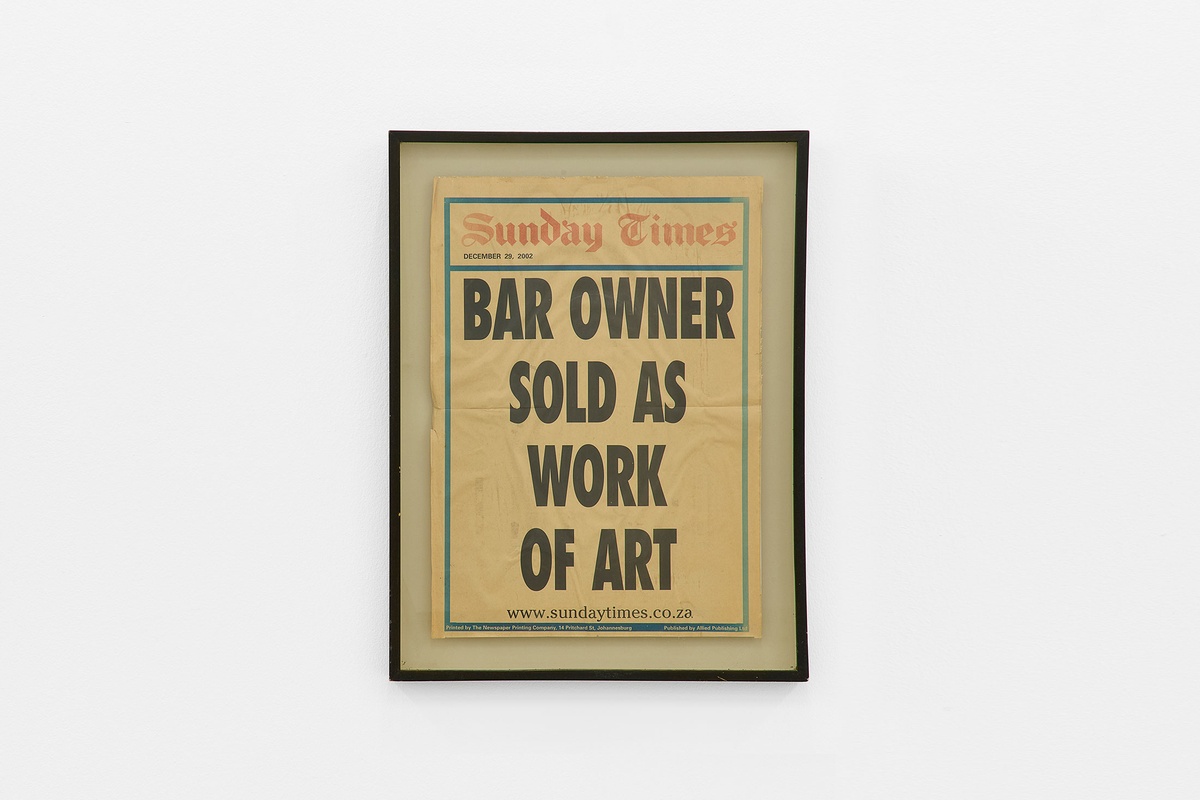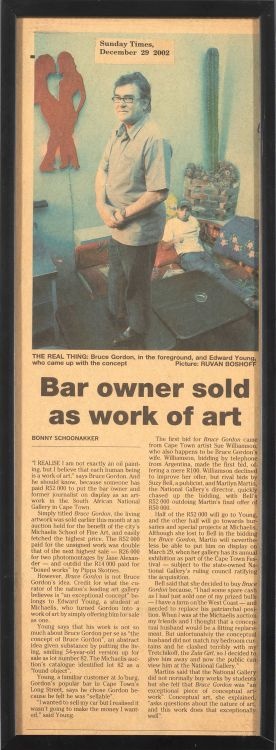Guy Simpson
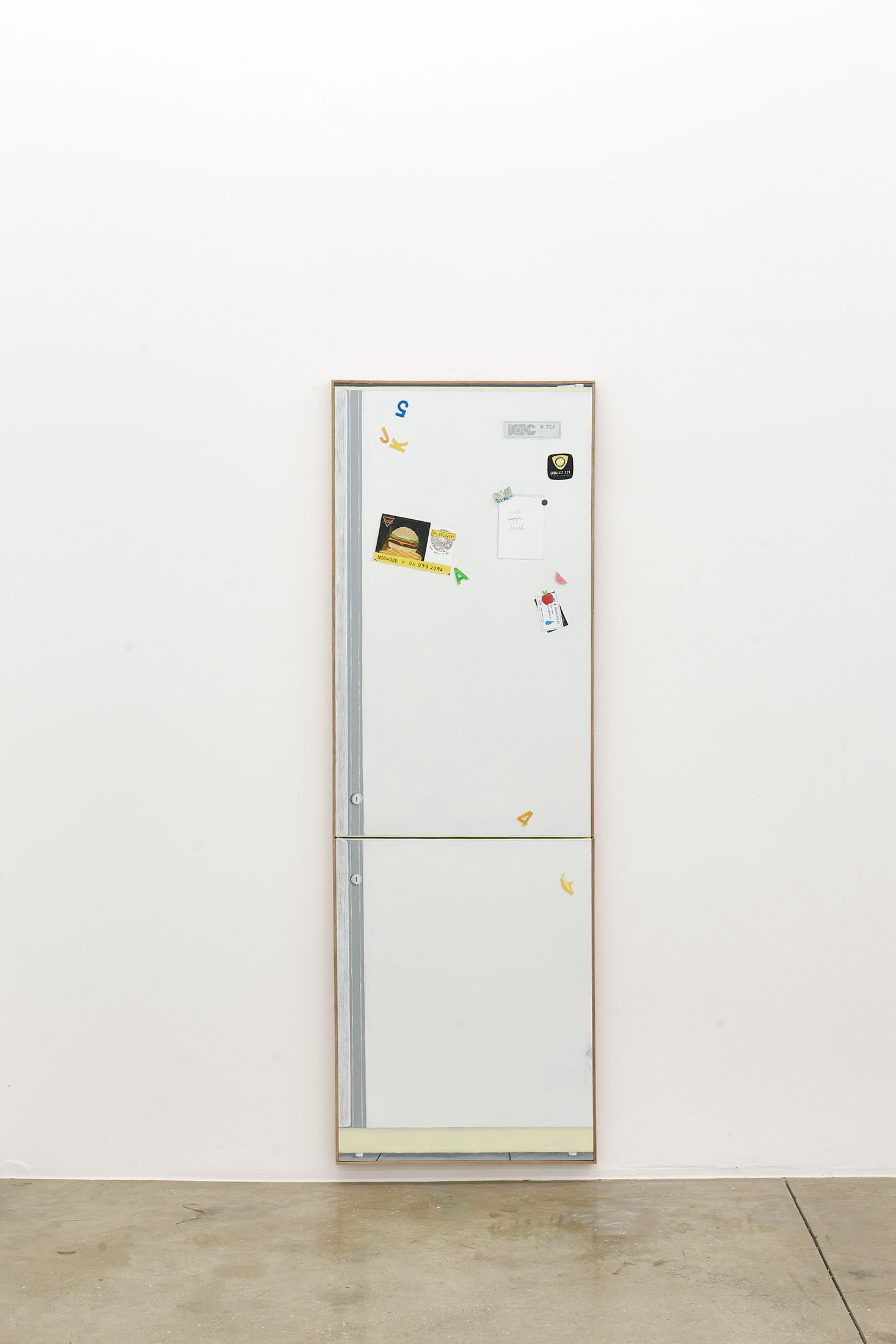
The fridge was a recurring subject in Mashabela’s conception of the exhibition Common at A4; a device with which to explore the guiding theme at its most domestic. A site of sustenance and shared meals, contested perishables, and petty office theft, the fridge embodies the variable nuances of communal resources and social organisation. Commissioned for this show, Simpson’s to-scale painting of the appliance offers an unsentimental representation of this kitchen commonage. It offers quiet reflections on the theme in a familial register, being at once particular (as present in the assortment of mismatched fridge magnets and handwritten note) and commonplace. The work’s conceptual lineage in the artist’s practice is apparent in his recent exhibition, House of Fran (THK Gallery, 2023), which documented the interior of his childhood home in Johannesburg; its skirting boards and panic buttons, popcorn walls, and bathroom tiles. Those unremarkable things that have become, as Sean O’Toole writes, the “generic and fungible landmarks of his youth.”
b.1994, Johannesburg
Pursuing divergent themes, Guy Simpson’s drawings and sculptures consider (respectively) imaginary spaces populated by the works of local artists and cartoon-like visual jokes. Both appear as theatrical propositions; his drawings empty sets for encounters, his sculptures props for comedic scenes. More recently, the artist has turned his attention to painting, and finds in the medium more oblique encounters with humour. His works on canvas take the form of 1:1 scale impressions of architectural incidents: a light switch, a broken blind, the sensor of a burglar alarm. The line work is spare, the paintings composed largely of emptiness. “What,” asks Simpson (as relayed by Sean O’Toole), “is the least I can do to represent this door or parquet floor or plug? How do I do that?” In pursuing such distillation of form, the artist hopes, he might distil “small truths from within the giant-ness of changing life.”
